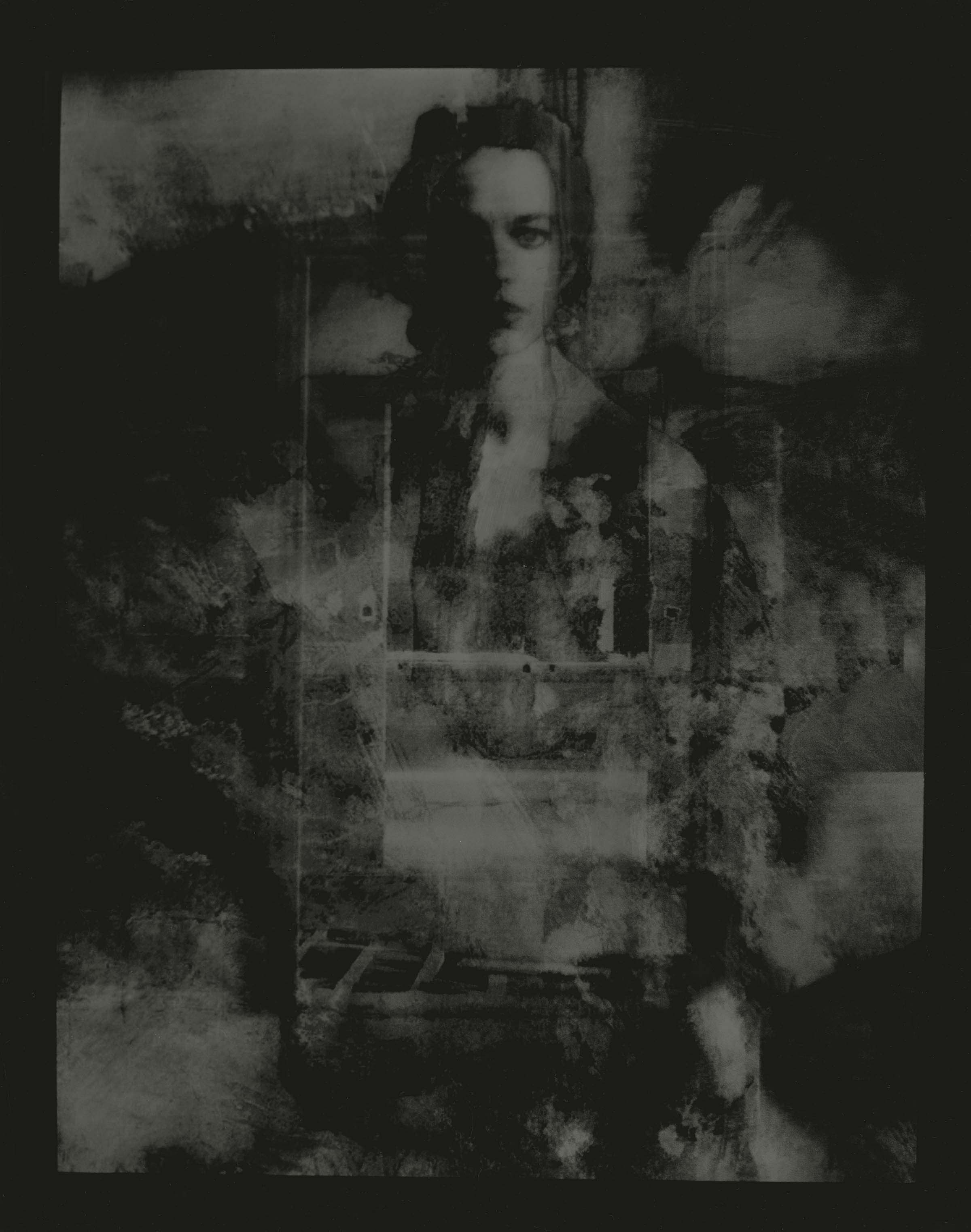
From the file: Josephine Sacabo was born in Laredo, Texas, in 1944 and educated at Bard College in New York. Prior to coming to New Orleans, Sacabo lived and worked extensively in France and England. Her many portfolios are visual manifestations of the written word – using poetry as the genesis for her work, she lists poets as her most important influences. During her 36-year career her work has been featured in over 40 gallery and museum exhibitions in the U.S., Europe and Mexico. She has been the recipient of multiple awards and is included in the permanent collections of the George Eastman House, the International Center of Photography, the Metropolitan Museum of Art and la Bibliothéque Nationale, Paris, France. Sacabo divides her time between New Orleans and Mexico. Both places inform her work, resulting in imagery that is as dreamlike, surreal, and romantic as the places that she calls home. Her images transfer the viewer into a world of constructed beauty.
Now, let me tell you about the Josephine Sacabo known to those of us photo-people who hang out in New Orleans a lot. She is a warm and gracious hostess. Her studio is a place for art thinking and practice. Her kitchen table is a place for profound and often irreverent conversations. And her generosity toward and support of the arts in New Orleans knows no bounds. Josephine and her husband, writer Dalt Wonk, own and operate Luna Press, committed to emphasizing the correspondence between words and images, thereby creating beautiful books. http://www.lunapress.com/
For those of you who will be in the Atlanta area between now and November 14, The Marcia Wood Gallery: Midtown, 1037 Monroe Drive, is hosting an exhibit, Bold (Feminine), highlighting an internationally diverse group of female photographers that addresses the oblique narrative of perception and representation of women in photographic imagery. Josephine is one of six artists from around the world whose work is included in the show. 404-827-0030 info@marciawoodgallery.com Hours Tues – Sat: 12 – 5
Her new work, titled Juana and the Structures of Reverie, opens at A Gallery for Fine Photography in New Orleans on November 12, and will hang until January 1, 2016.
Juana and the Structures of Reverie is introduced as follows:
This is the story of a woman who invents her freedom by creating an imaginary architecture made of light, scraps of memory, hopes and dreams – a permeable architecture where nothing is confined. It is dedicated to Juana la Loca, the supposed “mad” queen of Spain in the 16th century, who for political motives was imprisoned for 46 years by her father, husband, and son in an architecture of darkness and stone, in which she died broken and alone.
The figure of Juana la Loca is one who has for years fascinated both me and my friend and collaborator Jacqueline Miro. But every time we started out to do something based on her, something else took over and it wasn’t until last year in Mexico that it all fell into place. I was taken by a friend to a ruined hacienda called Jaral De Berrio, and from the moment I walked in I knew that a profound chord had been struck. I felt as if I had walked into another dimension altogether, and yet a familiar one.
I began to photograph it and soon after decided I would construct a sort of “memory palace” made up of all the rooms and details of this magical place. I wanted to record not the house as it was, but the effect it was having on me. A house of dreams. But whose dreams? When I decided to include the female figure whose dream this was, I remembered Juana la Loca and it all came together. I decided to construct an alternative scenario for her – a structure of reverie in which she could be free. It is my gift to her and an expression of my faith in the power of the imagination.
The images are 11X14” tintypes which are a real challenge in the darkroom. It’s probably taken years off my life. But I am really satisfied and happy with the results.
The twelve photographs in the gallery below this interview, selected from Juana and the Structures of Reverie, are arranged in narrative order. They carry the viewer through the story as imagined by the artist.
Judy Sherrod: This series follows the gorgeous body of work referencing Clarice Lispector (http://josephinesacabo.com/photographs/beyond-thought/#.ViFRwWuRbdc). Is there a natural progression from the first to the next? What do the women share that interests you artistically? How do you, Josephine, show up in these works?
Josephine Sacabo: Actually this new work doesn’t follow Beyond Thought which was the work inspired by Clarice Lispector. In between I did a large series of 8X10” tintypes called Salutations (http://josephinesacabo.com/photographs/salutations/#.ViFSCmuRbdc) which was my solo show at the New Orleans Museum of Art in January 2015. That show did not feature a female persona and was all over the place in terms of subject matter. There was no narrative thread whatsoever. It was loosely based on this quote from Stéphane Mallarmé from a poem called “Salutations”:
to loneliness, the reef, a star
to anything that has come to earn
the blank white canvas of our care.
I don’t really see a natural progression from Clarice Lispector to Juana la Loca.
With Clarice it was her writing that truly inspired me. Her way of looking at the world and her exquisite expression of what she saw and felt forever changed my way of perceiving certain things, like orchids for example. I tried to create a visual equivalent for many of her observations. Sometimes the image came first and it was her words that explained to me what I had created. And sometimes it went the other way.
With the new series it was really the house that inspired the images more than anything. Old houses fascinate me and always have and this one was the epitome of all I loved about the various houses I have encountered in my life. It was later that I began to think about whose house this could have been, whose “shelter for daydreams” as [Gaston] Bachelard called the house. In a sense this series is more about architecture and the reveries it can inspire. All I really know of Juana la Loca is that she was an exceptional, passionate woman imprisoned in a convent with no way out. So it seemed to me the perfect architectural alternative to that scenario. I have read several books about Juana la Loca but she herself left very little testimony about her life.
As to where I fit in, I realized after I had been in Jaral de Berrio for a couple of hours that I was feeling exactly what I had felt when I was 8-years-old and had a secret room in my great-grandparents’ abandoned house in Laredo. I was blissful.
JS: Photography is a “call and response” medium. Some photography responds to the environment’s call. Some is called by social issues, some by beauty, and some by internal provocation. Your art is called by literature and the poetics of history. How did that come about? What led you to that calling?
Sacabo: Poetry and literature were a passion of mine since I was young but cameras were not a part of my life. You could say the “call” was there but not the means for a response. I got my first camera when I was 23 and working as an actress. A friend had left his camera behind in a house where we were living in France and I asked a photographer I knew in the village to show me how to work it. He did and from my first contact sheet I knew I had found my voice. Mind you, I never thought I’d show my photographs to anyone else!! It was a very private thing for quite a while.
JS: Do these poetic influences motivate you to write or journal? Are there narratives within you that you’d like to explore and expand upon visually?
Sacabo: I only write extended notes to myself sometimes toward the beginning of a project in an attempt to focus the whirlwind of feelings of excitement that come over me. I am not aware of carrying around a narrative within me as such. Usually I respond to something or someplace or someone that strikes a deep chord within me. Probably the narrative is there and I’m just not conscious of it.
JS: How does it impact your art to be married to a writer / poet / illustrator?
Sacabo: Being married to another artist means we understand one another and give each other room to go crazy with whatever happens to be our latest obsession. That’s the good part. The bad part is there’s no one in the kitchen.
JS: You were born and raised in Laredo, Texas. Back in the fifties and sixties, Laredo was not an easy place to leave, nor was it an easy place to thrive. And yet you made your way out of and away from its then cultural limitations. What of Laredo and your early years there influences your art??
Sacabo: Laredo was great as a child but horribly limiting as an adult. As a result, what I have been able to retrieve from my childhood there has been invaluable to my work. The whole Latin culture – particularly the language- and the sense of belonging.
JS: On the technical side, you’ve used the photogravure process very successfully for years. What prompted the move to wet-plate collodion? What about wet-plate makes it a more suitable process for the Juana story than photogravure?
Sacabo: I love photogravure and wet plate and will continue to do both I think. I knew the images from the Juana series were going to be very detailed but I wanted to see if I could make a tintype that would be both detailed and yet darkly evocative in the overall feeling- as in a dream or a purely imagined reality.
JS: What’s coming up? What’s on the horizon? More wet-plate? Back to the press? Do you have concepts percolating?
Sacabo: I have 2 other series percolating right now and I don’t know what form they will take yet – one is called The Prayer Within and the other is called Emerging Form. I’m also experimenting with hand coloring gravures with pastels which is great fun. But you never know – something may come out of left field and knock my socks off.
Judy Sherrod
Judy Sherrod and her dog, B, wander a lot.
Judy is part of a group of rambunctious artists called shootapalooza.
shootapalooza is built upon the concept,
"We have to get better at helping each other." So that's what we do.
shootapalooza also creates art that benefits its communities.
shootapalooza also promotes art that benefits other humans.
More on that later.
shootapalooza.com
worldcyanotypeday.com
JFSherrod@aol.com
1 Comment
Add comment Cancel reply
This site uses Akismet to reduce spam. Learn how your comment data is processed.


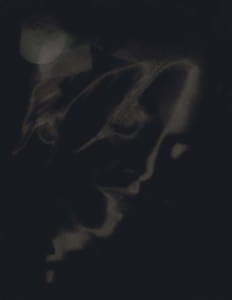
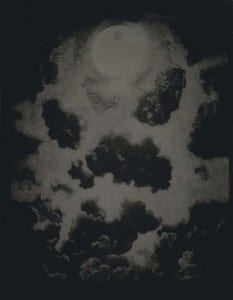
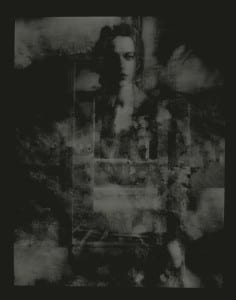
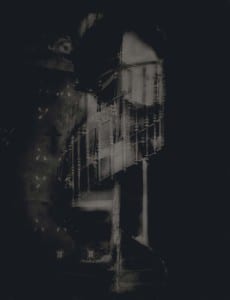
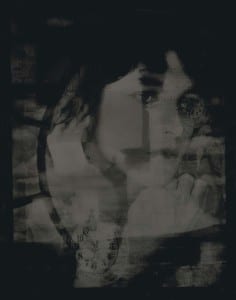
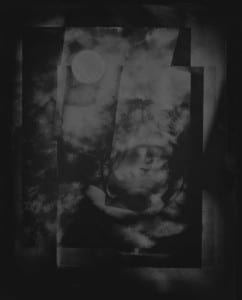
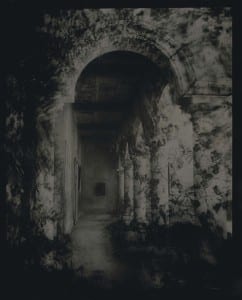
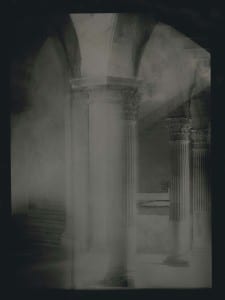
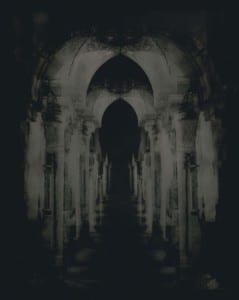
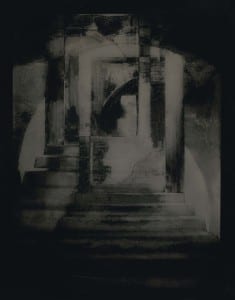
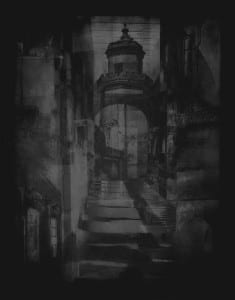
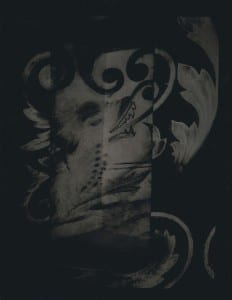
[…] coming […]